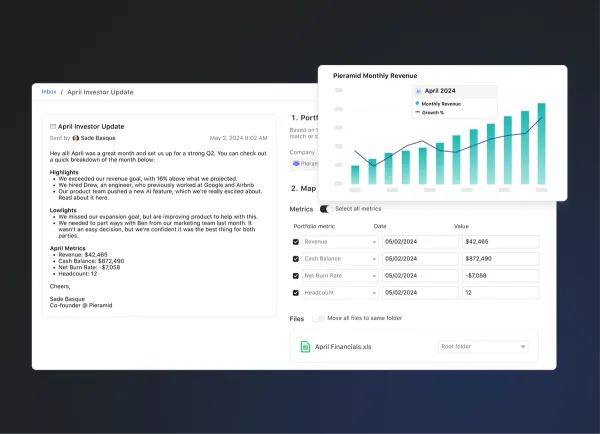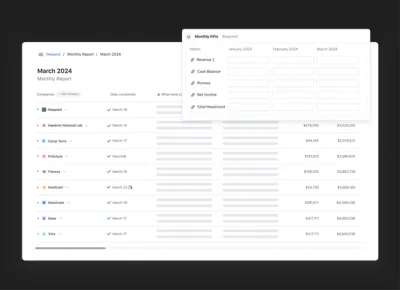
What is Market Share?
One of the first steps to building a business is understanding the market and understanding the viability of a successful business. Regardless if the goal is to be a multi-billion dollar company or a local joint that can sustain a few employees — understanding the market, and your share of the market is vital.
As Investopedia puts it, “Market share is the percent of total sales in an industry generated by a particular company. Market share is calculated by taking the company’s sales over the period and dividing it by the total sales of the industry over the same period. This metric is used to give a general idea of the size of a company in relation to its market and its competitors. The market leader in an industry is the company with the largest market share.”
Why is Market Share Important to Understand?
Understanding the market share is vital to determining the viability, and success of a company. In the earliest days, market share will help understand if a business is worth pursuing. Later in a business’s life, it can help stakeholders understand how they are performing compared to their competitors and can help shape roadmaps for future markets and products.
When building out financial models and projections, market share can certainly play a role. Market share has the opportunity to help shape and impact your future go-to-market strategy and product development. \
On the flip side, understanding your market share can oftentimes help shape your financing options. Your ability to capture a % of a market, large or small, will help funders and lenders understand the likelihood of receiving a return at a later date. For example, if you’re pursuing venture capital you need to demonstrate you can build a large business that will generate returns for them.
How to Calculate Market Share
Revenue vs. Units/Customer Count
Market share can be broken down a few different ways. Generally, the 2 most common ways to break down market share is by revenue or by # of units/customer count. Calculating either follows the same general steps as below (but you will sub out units for revenue and vice versa).
1. Determine what you’re calculating
Like any startup metric, you have to first determine how and why you are calculating something. A couple of questions to ask yourself when calculating market share:
- What period of time am I analyzing?
- What specific market am I evaluating?
- Am I calculating our share of revenue or units/customers?
For example, let’s say we have a store, Visible Bread Co, and sell artisan bread in Chicago. We want to calculate our % of the artisan bread market sales over the last year in Chicago.
2. Calculate company data
First things first, you need to calculate your revenue (or units/customers) for the specified period of time. For companies that have multiple products that span different markets, make sure you are focused solely on the product and market you are evaluating.
Continuing on our example, let’s say Visible Bread Co. did $100,000 in artisan bread sales over the last year. (Keep in mind, if we were calculating our share based on units that might translate to something like 30,000 units/loaves of bread)
3. Calculate market data
Now that you understand your company’s performance in a specific market, you need to understand how the market is performing as a whole. Calculating the market data is a mix of art and science. Depending on the market, there may be publicly available reports and data you can leverage. On the flip side, if there is no publicly available data you may need to piece together your data and assumptions to estimate the market.
To help, you can check out our total addressable market template here.
For Visible Bread Co., we found sales from a local association that shows there has been $1,000,000 in total artisan bread sales in Chicago over the past year.
4. Calculate your market share
Now that we have our data in place, it is time to do a simple calculation. Simply take your sales or units and divide it by the sales or units for the market as a whole. Times by 100 and that is your market share.
For Visible Bread Co., that looks like this $100,000/$1,000,000 = .10 x 100 = 10% of Chicago artisan bread sales over the last year.
5 Things to Consider When Evaluating Market Share
There are few better ways to measure your business against competitors than by calculating market share. Knowing how big your slice of the pie is helping keep founders and investors on the same page when it comes to tracking a product or services’ participation in the market. So how do you do it the right way?
1. Is now the right time for market share?
Depending on company size, investors may disregard market share as a progress indicator. Especially in the early days, this metric doesn’t matter if your company doesn’t have already own a significant percentage to track. Sizing your company up against the market leaders may be a fruitless exercise if you’re still in the process of rolling out a product. For founders and investors talking about a startup in its first few rounds of financing, now is likely not the time to worry about your share of the market.
2. Understand your Total Addressable Market (TAM)
You can’t measure your market share without first knowing the Total Addressable Market (TAM) you’re pursuing. It’s essential to conduct a thorough assessment of long and short-term market factors, as determining TAM can be a tricky exercise. But make the best estimate of the number of customers in your market, the different types of customers you’re targeting, how much they’ll pay, how you expect the market to grow, and project revenue for 100% market penetration.
3. Measure market penetration
Now you’ve got a reasonable idea of how many total customers are there for the taking. How many are currently under contract? Treat the total number of customers like units and simply calculate your current client base percentage from the total number. For instance, if your SaaS company has an installed customer base of 200 in a TAM of 200,000, your market penetration is 1 percent.
4. Determine market share
How much are customers actually paying under each contract? In your TAM exercise, you’ve assessed your client’s propensity to pay, now determine how well that’s translated into contract value. Again, it’s a simple equation: if you currently own $1,500,000 of a total sales volume of $150,000,000, 150,000/150,000,000 = 1 percent market share.
Now, your market share and market percentages won’t align if your contract value underperforms or exceeds projections. However, both data points will help underscore your evolving market share and provide insight.
5. Track over time
Growth or decline in market share or market penetration can be powerful communication tools for your business narrative. A sagging market share may expose a surge in competition, whether that’s revealed to be a battle over price or new challengers to the game. On the other hand, it’s hard to argue with a founder that’s showing steady growth when it comes to the company’s fight for market dominance. Keeping market share in your regular investor communication will be greatly useful once you’ve determined that your company has reached a significant percentage threshold.
How to Expand Market Share
Most businesses are constantly looking to expand and grow (some are not, which is great too!) their share of the market. At the end of the day, this requires finding new customers and/or expanding your existing customer base. A few ways companies generally find success when looking to grow their customer base and capture more of a market:
1. Lower prices.
Lower prices can be a quick way to convert more customers (be aware of underpricing your product or service!). Note, lower prices can have an impact on your overall revenue, especially for SaaS businesses.
2. Innovate new products and features.
One way to grow your share of a market is by introducing new features and products. Using existing research and customer feedback, you can make an informed decision about the development of new products and features.
3. Appeal to new demographics.
Going hand-in-hand with building new products and features, is finding a new demographic. You may dominate one small segment of an overall market but have the opportunity to pursue new personas.
4. Delight your customers.
Word-of-mouth and happy customers can take your business to a new level. Having customers that are eager to spread the word about your business can be an incredible, and organic, way to grow your share of the market.
Download our Template!
In order to help calculate your market share and your potential to build a large business, it helps to calculate and understand the total addressable market and sensitivity analysis. Check out our free total addressable market template below:




